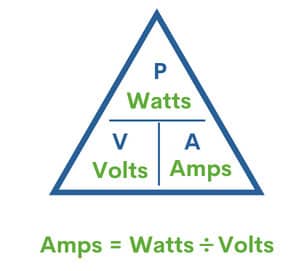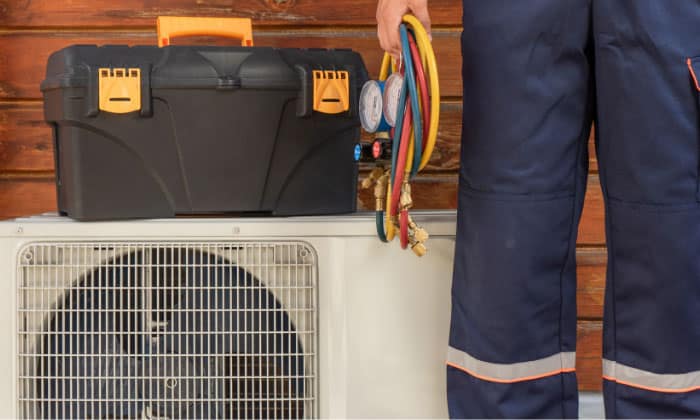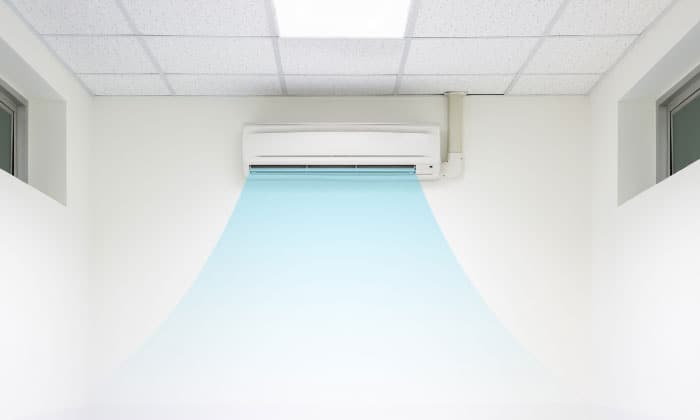Knowing the amperage draw of an air conditioner can help prevent issues like overloads and short circuits. Now, you’re wondering how many amps does a 5000-15000 BTU air conditioner use.
Generally, an air conditioner draws 1 amp per 500 BTU. So air conditioners with 5,000 to 15,000 BTU typically need 10 to 30 amps. However, certain factors may affect amperage draw, like voltage and efficiency rating.
So continue reading to know the details about the amps of different air conditioners.
Table of Contents
How Many Amps Does a 5,000 to 15,000 BTU Air Conditioner Put Out?
Understanding the amperage requirements of 5,000 to 15,000 BTU air conditioners means knowing certain particulars. Some details you should get to know are:
1. Amp draw chart
An air conditioner’s features, along with the number of other electronics connected in the circuit, may alter the amperage rating of the setup. Still, the following power consumption chart shows you estimate values based on different elements.
| AC Capacity (in BTU) | Amperage Draw (Estimate) |
| 5,000 BTU | 3.6 to 5.4 amps |
| 6000 BTU | 4.3 to 6.5 amps |
| 8000 BTU | 5.8 to 8.7 amps |
| 10,000 BTU | 7.3 to 10.9 amps |
| 12,000 BTU | 8.7 to 13 amps |
| 15,000 BTU | 10.9 to 16.3 amps |
2. Starting Amps Vs Running Amps Of AC Units
Again, amperage requirements may differ per setup. Moving forward, here’s an air conditioner amperage chart highlighting start and running amps.
| BTU | Starting Amps | Running Amps |
| 5000 BTU | 7 to 9 amps | 4.3 amps |
| 6000 BTU | 8 to 11 amps | 5.2 amps |
| 8000 BTU | 11 to 13 amps | 7 amps |
| 12000 BTU | 17 to 25 amps | 3 to 5 amps |
| 15000 BTU | 18 to 30 amps | 6.5 to 7 amps |
| 24,000 BTU | 33 to 50 amps | 7 to 10 amps |
| 36,000 BTU | 50 to 75 amps | 10 to 15 amps |
| 48,000 BTU | 67 to 100 amps | 13 to 20 amps |
3. AC Amps Calculator
Calculating the amperage of an air conditioner is typically the same with other electronic devices. The formula to use is also identical, regardless of the type of cooling unit you have, such as a central or window AC.
The formula to use to calculate an AC’s amperage draw is: watts / volts = amps. For example, 1,200 watts / 240 volts = a 5 amp air conditioner.
That said, if you know the BTU and efficiency rating or EER of the appliance, here is a more detailed formula:
\begin{equation}
\text{Amps} = \frac{\text{BTU}}{\text{EER} \times \text{Volt}}
\end{equation}
How Do You Convert Amps to BTU?
First, multiply the amperage draw of the appliance (e.g., air conditioner) with the circuit’s voltage. For instance, a 10-amp, 120V AC will use 1200W.
Next, multiply the wattage you found by the amount of the time the circuit runs. So, if the circuit needs to run for 20 seconds, the formula should look like this: 1200W x 20 = 24,000 joules.
Finally, divide the answer to that formula with the joules of a standard BTU, which is 1,055. Therefore, this example results in an appliance carrying 22.74 BTU.
Aside from converting amperage to BTU manually, you may also use an online amps to BTU converter. A reliable online calculator may also provide you with different results based on various situations.
FAQs
How Do I Know AC Wattage?
You can modify the formula in finding an AC’s amp draw to calculate its wattage. This time, the formula to use is: amps x volts = watts.
For example, a 20 amp air conditioner requires 240 volts to run. For this appliance, the resulting wattage is 4,800 watts.
Is There A Difference In Starting Amps And Running Amps?
As their names imply, starting and running amps are the power measurements of electronic devices like AC units based on certain timeframes.
In particular, starting amps is the amp draw at the beginning of the appliance’s running time. On the other hand, running amps is the power measurement used while the machine is functioning.
When Should A Plug Adapter Be Used?
You should only use a plug adapter if your property uses a metallic circuit breaker enclosure with a grounding system. Plug adapters might also be ideal if your air conditioner’s built-in socket doesn’t fit the wall outlet.
But be wary as there are also certain instances when plug adapters aren’t safe. For instance, if a fault occurs with the electric current, the issue may travel to the breaker box. This event may trip the connected breaker or ruin it.
Read now the most common reasons why your air conditioner keeps tripping the circuit breaker
How Much Power Does A Portable AC Unit Draw?
Portable ACs often have amperage ratings ranging from 3.1 to 12.8 amps. Bear in mind that amperage draw isn’t the end-all determinant of whether a portable AC is energy efficient or not.
A low amperage air conditioner, particularly a portable unit, might provide value to many homeowners. But using the same unit to bring cold air to a 2,000-square-foot space might not be the best option; it’s best for small rooms only.
Nonetheless, you can find portable ACs on the market with the performance to cool moderately large spaces of 1,000 square feet.
How Much Does A GE 5,000 BTU Air Conditioner Cost To Run?
On average, the cost to run a 5,000 BTU air conditioner from GE (or from other brands) is about $0.06 per kilowatt hour. Take note that the property’s location can affect the overall costs. For example, Tennessee may have lower electricity rates than Texas.
Is A 10000 BTU Air Conditioner Worth It?
A 10,000-BTU AC can be ideal to help cool spaces up to 300 square feet. Take note that the appliance’s efficiency can lower if it encounters issues, such as dirty filters, malfunctioning coils, and leaking condensers.
What Happens If BTU Is Too High?
High BTU air conditioners may provide the ideal cooling for certain spaces. But if the BTU is too high, the air conditioner may experience problems like wasted energy and frequent power cycling.
Consider the dimensions of the location to prevent these AC concerns. Generally, you need 20 BTU for every square foot to cool the area.
For example, a 14000 BTU air conditioner can bring cold air to a 700-square-foot space. Additionally, 18,000 BTU systems can help cool up to 900-square-foot rooms.
Conclusion
After reading this post, you should know how many amps does a 5000-15000 BTU air conditioner use. Remember, different factors can affect the starting and running amps of an air conditioner.
Nonetheless, calculating for the cooling unit’s amperage draw can be a great start to ensure you’re using it properly. Identifying other factors, such as the space to cool, can also help bring value to using your chosen air conditioning unit.
Calculating the ideal amps for your home appliances like:

I am Edwin Jones, in charge of designing content for Galvinpower. I aspire to use my experiences in marketing to create reliable and necessary information to help our readers. It has been fun to work with Andrew and apply his incredible knowledge to our content.




